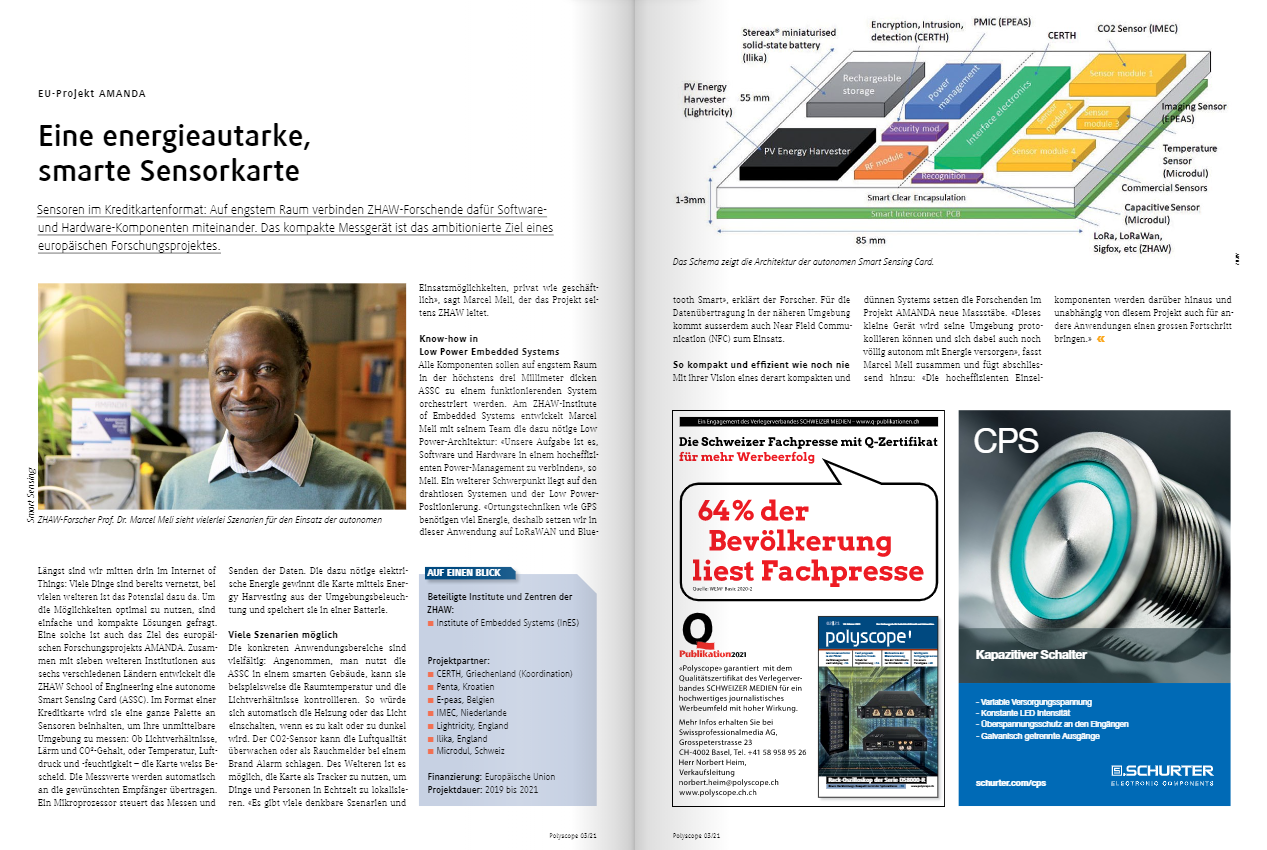“An Energy-Efficient, Smart Sensor Card” in Polyscope Magazine

“An Energy-Efficient, Smart Sensor Card” is the title of an article about the AMANDA project published in Polyscope - the practice-oriented Swiss trade magazine for industrial electronics and automation.
Prof. Dr. Marcel Meli, Lecturer and Head of the Wireless System Group at ZHAW - University of Applied Sciences, Institute of Embedded Systems (InES), emphasized the primary goal of the AMANDA project, that is to design and develop a maintenance-free, miniaturized and adaptable Autonomous Smart Sensing Card – ASSC for multipurpose environmental sensing and asset tracking in smart living and working applications. All components are to be orchestrated into a functioning system, so the thickness of the ASSC do not exceed 3 millimetres.
With a vision of such a compact and thin system, the AMANDA consortium is setting new standards. “This small device will be able to log its surroundings and at the same time supply itself with energy completely autonomously”, summarizes Prof. Dr. Marcel Meli and adds, “the highly efficient individual components will also bring great progress for other applications independent of this project”. In the format of a credit card, the ASSC will contain a whole range of sensors to measure its immediate surroundings: whether and light conditions, noise and CO2 content, or temperature, air pressure and humidity. The measured values are automatically transferred to the desired recipient. A microprocessor controls the measurement and transmission of the data. The card gains the energy required for this from the ambient lighting using energy harvesting and stores it in a battery.
Furthermore, for Polyscope magazine, possible scenarios, i.e. use cases of the AMANDA card, were presented. AMANDA Consortium is now focusing on three primary use cases: Environment monitoring and reporting, Assets tracking and occupancy monitoring, Mitigating the effects of the current pandemic.
Polyscope magazine, in which an article about the AMANDA project was published, is also available in an e-edition and can be found at the following link:
https://epaper.polyscope.ch/reader/?/ED7E29867/
For more information and the full text of the article, see pages 42-43.

